We arrived once again at the amazing field of sunflowers.

In general, the sunflowers prefered the open sunny field while any shady areas were dominated by lupine.

Sunflowers and Lupine
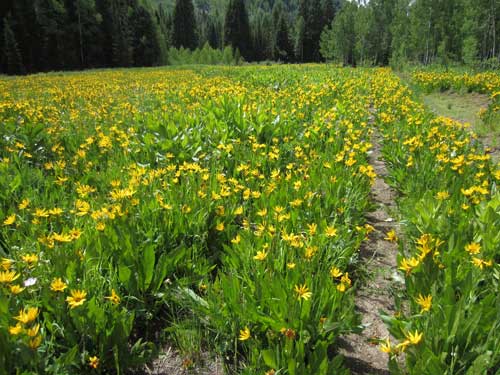



American Vetch (also Purple Vetch) is in the legume or pea family. It usually wraps its tendrils around other plants for support.
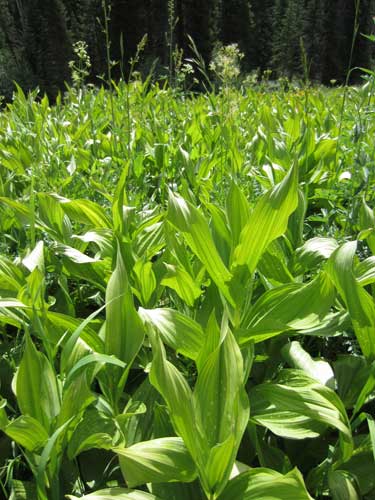
California Corn Lily (also Skunk Cabbage and White False Hellebore) is a poisonous plant of wet mountain meadows. The bright green leaves can be more than a foot long.

A chipmunk strikes an exceptionally cute pose for the camera. We saw these (and also ground squirrels) running all about, but they were all so skittish that it was almost impossible to get a good photo of them.
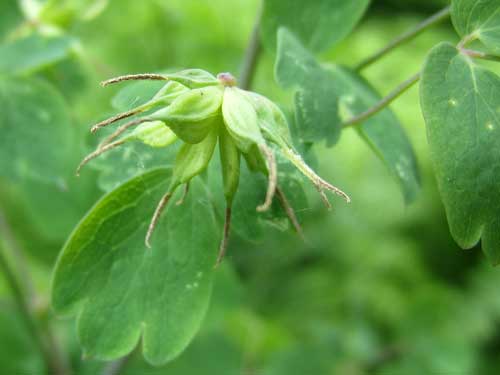
Remember we saw the male Meadow-rue plant yesterday with the tassel-like flowers? Well, this is the female plant.
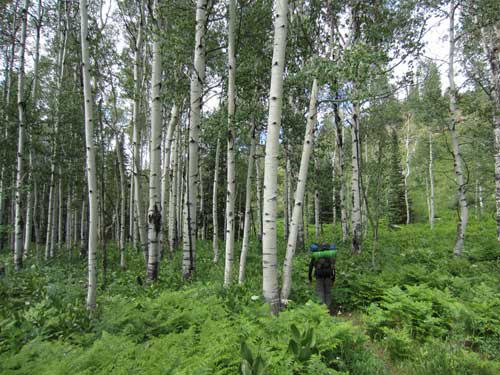

Wow, this kind of stuff just continues to take my breath away!

We also saw a fully-in-bloom Cow Parsnip yesterday as well. This flower looks like it's just emerging from some kind of giant pod.

A light purple version of the white larkspur we've been seeing. They often get to an incredibly deep, dark purple color.

Heading down the steep trail

This butterfly also got attacked by the aggressive ants and forced to move.

Jo enjoys the view of the valley.
Suddenly in the dense thickets far far below, we saw two large shapes bound quickly away. Elk! We could tell they weren't deer because of their distinctive white hindquarters and dark shaggy mane. They were unfortunately gone in less than a second, vanished deep within their protective green home.

A fleeting glimpse of the male elk

A view down the valley

Sulphur flower is a type of buckwheat native to this area. It is an highly variable plant and is often hard to identify because individuals can look very different from one another.
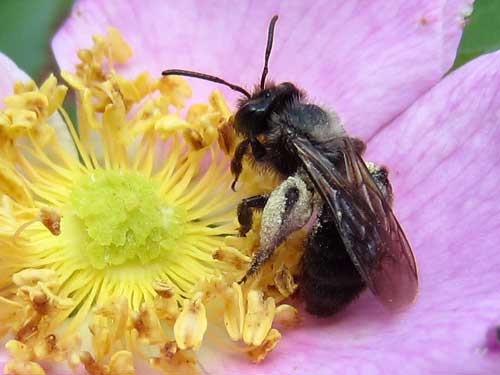
Wow! This little bee is really loaded down with pollen!

I couldn't resist.

This is possibly Northern Bedstraw, but there are lots of small white flowers that look very similar.
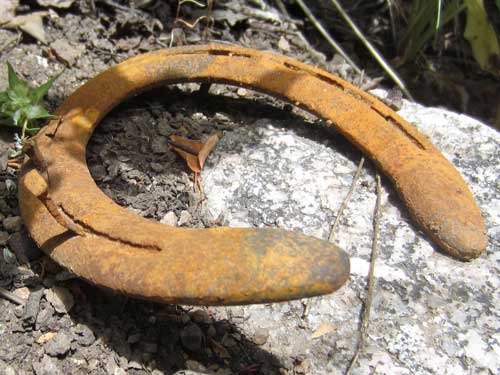
An old horseshoe

Unknown orange moth

An early Yellow Coneflower. Eventually the long yellow petals will unfurl and the center will bloom (it is covered in 200 or more individual florets which are yellow-green in color).
We eventually arrived back at our two original stream crossings and arrived at our meadow campsite in the early afternoon.

A hop, skip...
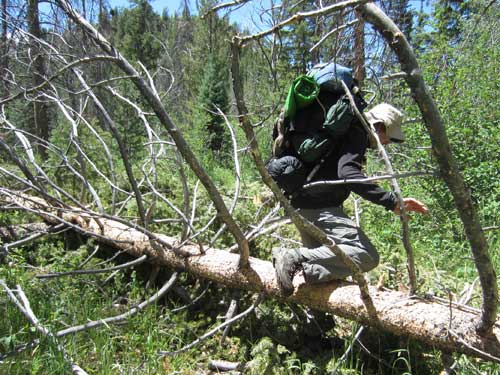
... and a jump and we are back.
We first had to dry out the tent, sleeping bags and pads. We then had some lunch, set up the tent, got some more water, and I even took a short buzz-free nap.

The drying tree

Setting up the tent

This Snakefly spent quite a long time sucking up moisture from the sleeping pad. Even though they look scary and are predatory, Snakeflies are not aggressive. The name stems from their physical (not behavioral) resemblance to snakes... the long neck and snake-shaped head. Females have a needle-like ovipositor used to deposit eggs into the crevices of tree bark or dirt. It is not a stinger.

Weevils belong to the family of snout beetles, one of the most diverse groups with over 40,000 species worldwide. They don't all have the long, needle-like nose that most people think of when they think of a weevil. The one thing they do all have in common is that they are SUPER tiny. This small grey weevil possibly belongs to the subgroup of Broad-nosed weevils, which contains most of the short-nosed weevils. Common genera are Polydrusus and Phyllobius.

Our little weevil was slightly smaller than a housefly. (That is a small point&shoot camera.)
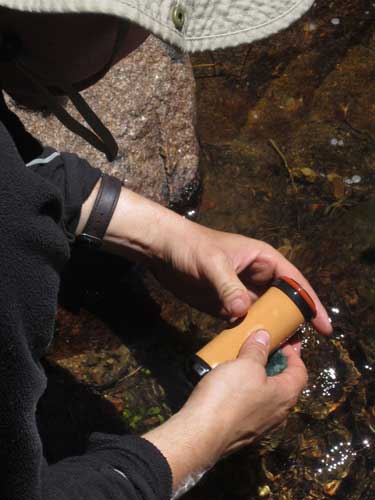
Cleaning the core of the water filter

Water striders have many common names... pond skaters, water skeeters, water skimmers, water skippers, and even Jesus bugs. They are anatomically built to transfer their weight to be able to run on top of the water's surface. There are over 1,700 species, with 10% of them being marine.

A quiet (and mosquito-free!) view from inside the tent

